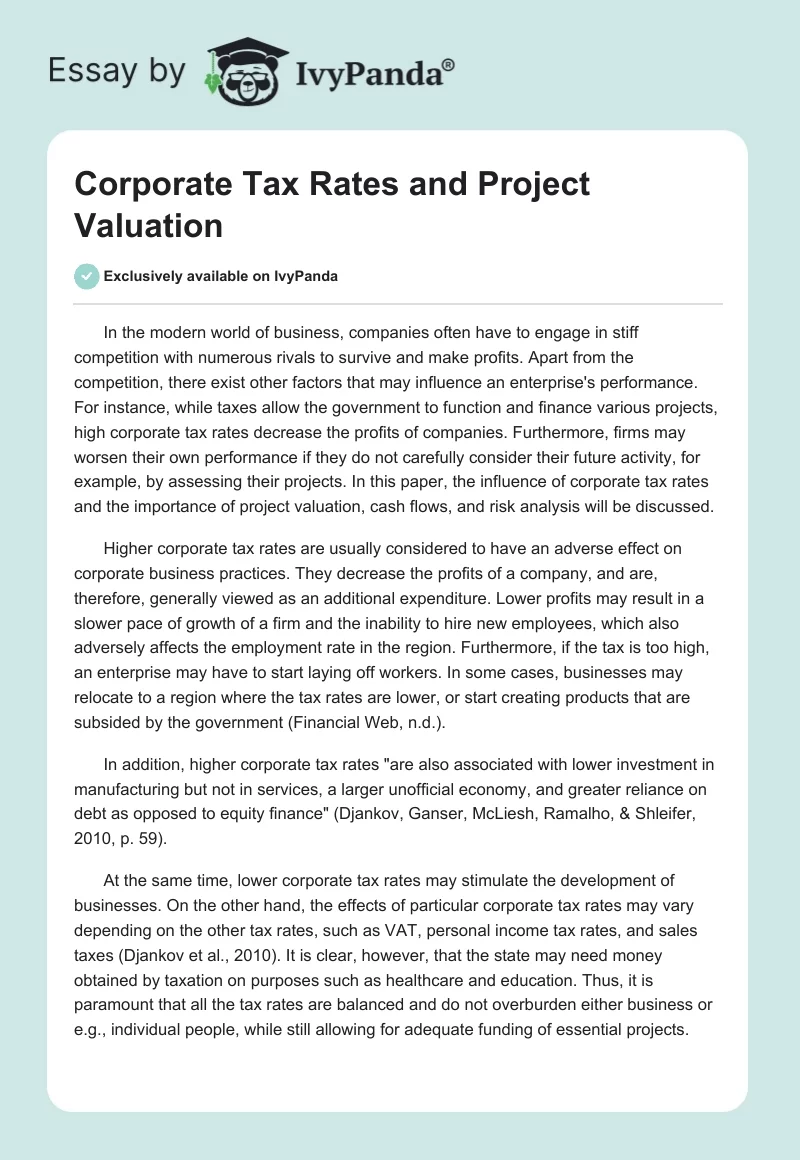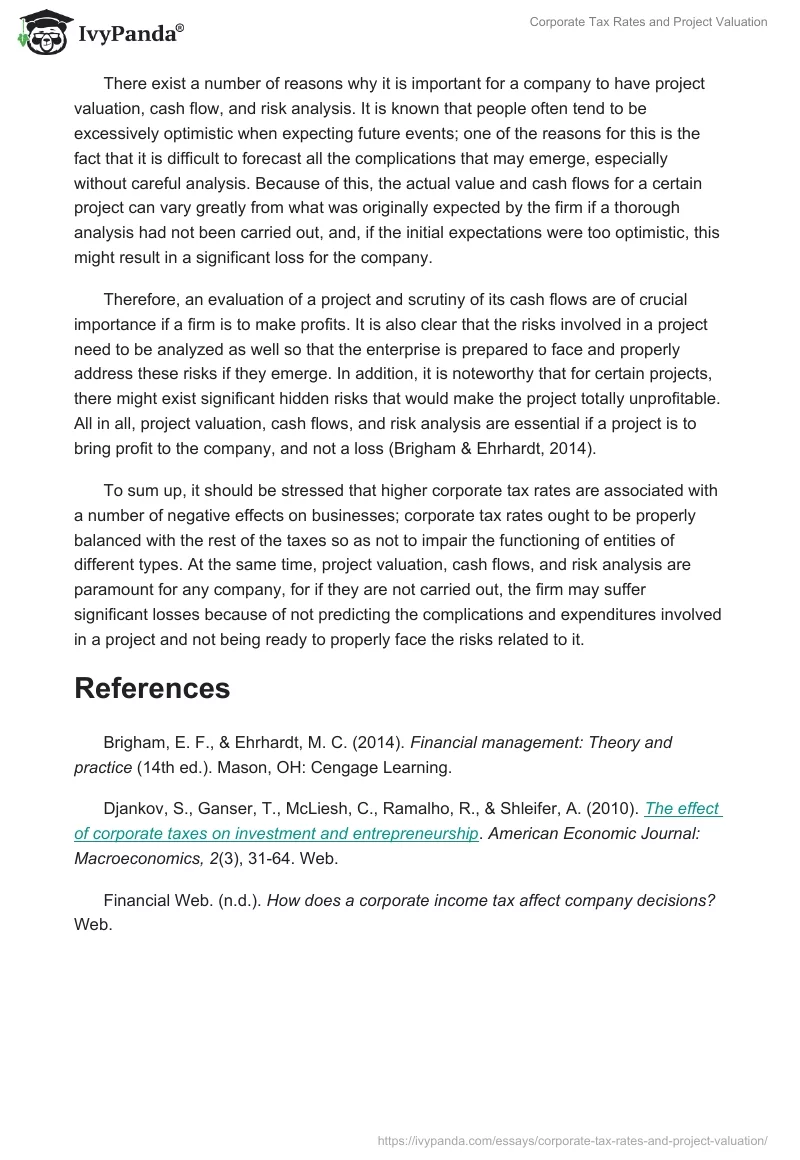In the modern world of business, companies often have to engage in stiff competition with numerous rivals to survive and make profits. Apart from the competition, there exist other factors that may influence an enterprise’s performance. For instance, while taxes allow the government to function and finance various projects, high corporate tax rates decrease the profits of companies. Furthermore, firms may worsen their own performance if they do not carefully consider their future activity, for example, by assessing their projects. In this paper, the influence of corporate tax rates and the importance of project valuation, cash flows, and risk analysis will be discussed.
Higher corporate tax rates are usually considered to have an adverse effect on corporate business practices. They decrease the profits of a company, and are, therefore, generally viewed as an additional expenditure. Lower profits may result in a slower pace of growth of a firm and the inability to hire new employees, which also adversely affects the employment rate in the region. Furthermore, if the tax is too high, an enterprise may have to start laying off workers. In some cases, businesses may relocate to a region where the tax rates are lower, or start creating products that are subsided by the government (Financial Web, n.d.).
In addition, higher corporate tax rates “are also associated with lower investment in manufacturing but not in services, a larger unofficial economy, and greater reliance on debt as opposed to equity finance” (Djankov, Ganser, McLiesh, Ramalho, & Shleifer, 2010, p. 59).
At the same time, lower corporate tax rates may stimulate the development of businesses. On the other hand, the effects of particular corporate tax rates may vary depending on the other tax rates, such as VAT, personal income tax rates, and sales taxes (Djankov et al., 2010). It is clear, however, that the state may need money obtained by taxation on purposes such as healthcare and education. Thus, it is paramount that all the tax rates are balanced and do not overburden either business or e.g., individual people, while still allowing for adequate funding of essential projects.
There exist a number of reasons why it is important for a company to have project valuation, cash flow, and risk analysis. It is known that people often tend to be excessively optimistic when expecting future events; one of the reasons for this is the fact that it is difficult to forecast all the complications that may emerge, especially without careful analysis. Because of this, the actual value and cash flows for a certain project can vary greatly from what was originally expected by the firm if a thorough analysis had not been carried out, and, if the initial expectations were too optimistic, this might result in a significant loss for the company.
Therefore, an evaluation of a project and scrutiny of its cash flows are of crucial importance if a firm is to make profits. It is also clear that the risks involved in a project need to be analyzed as well so that the enterprise is prepared to face and properly address these risks if they emerge. In addition, it is noteworthy that for certain projects, there might exist significant hidden risks that would make the project totally unprofitable. All in all, project valuation, cash flows, and risk analysis are essential if a project is to bring profit to the company, and not a loss (Brigham & Ehrhardt, 2014).
To sum up, it should be stressed that higher corporate tax rates are associated with a number of negative effects on businesses; corporate tax rates ought to be properly balanced with the rest of the taxes so as not to impair the functioning of entities of different types. At the same time, project valuation, cash flows, and risk analysis are paramount for any company, for if they are not carried out, the firm may suffer significant losses because of not predicting the complications and expenditures involved in a project and not being ready to properly face the risks related to it.
References
Brigham, E. F., & Ehrhardt, M. C. (2014). Financial management: Theory and practice (14th ed.). Mason, OH: Cengage Learning.
Djankov, S., Ganser, T., McLiesh, C., Ramalho, R., & Shleifer, A. (2010). The effect of corporate taxes on investment and entrepreneurship. American Economic Journal: Macroeconomics, 2(3), 31-64. Web.
Financial Web. (n.d.). How does a corporate income tax affect company decisions? Web.


